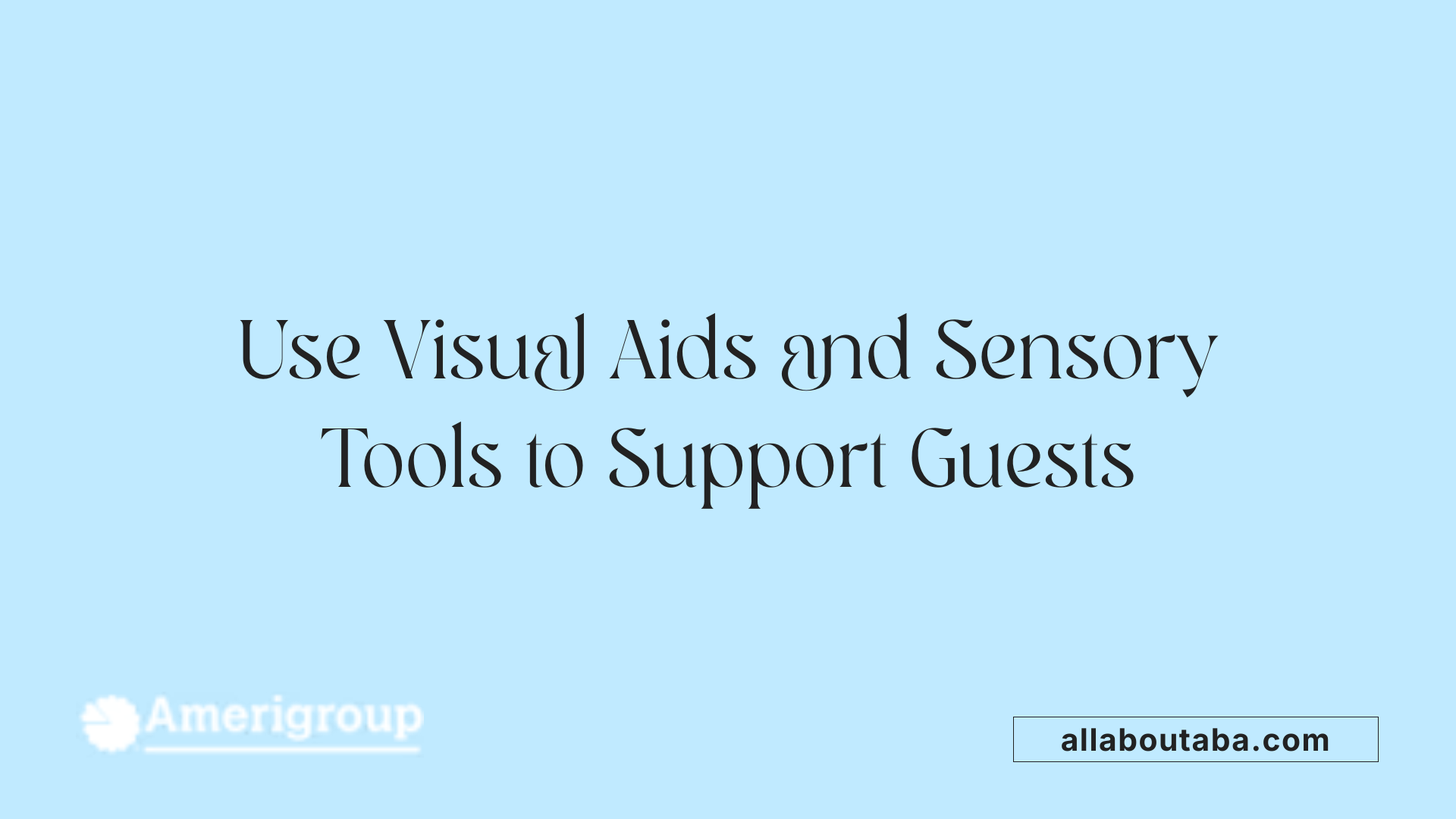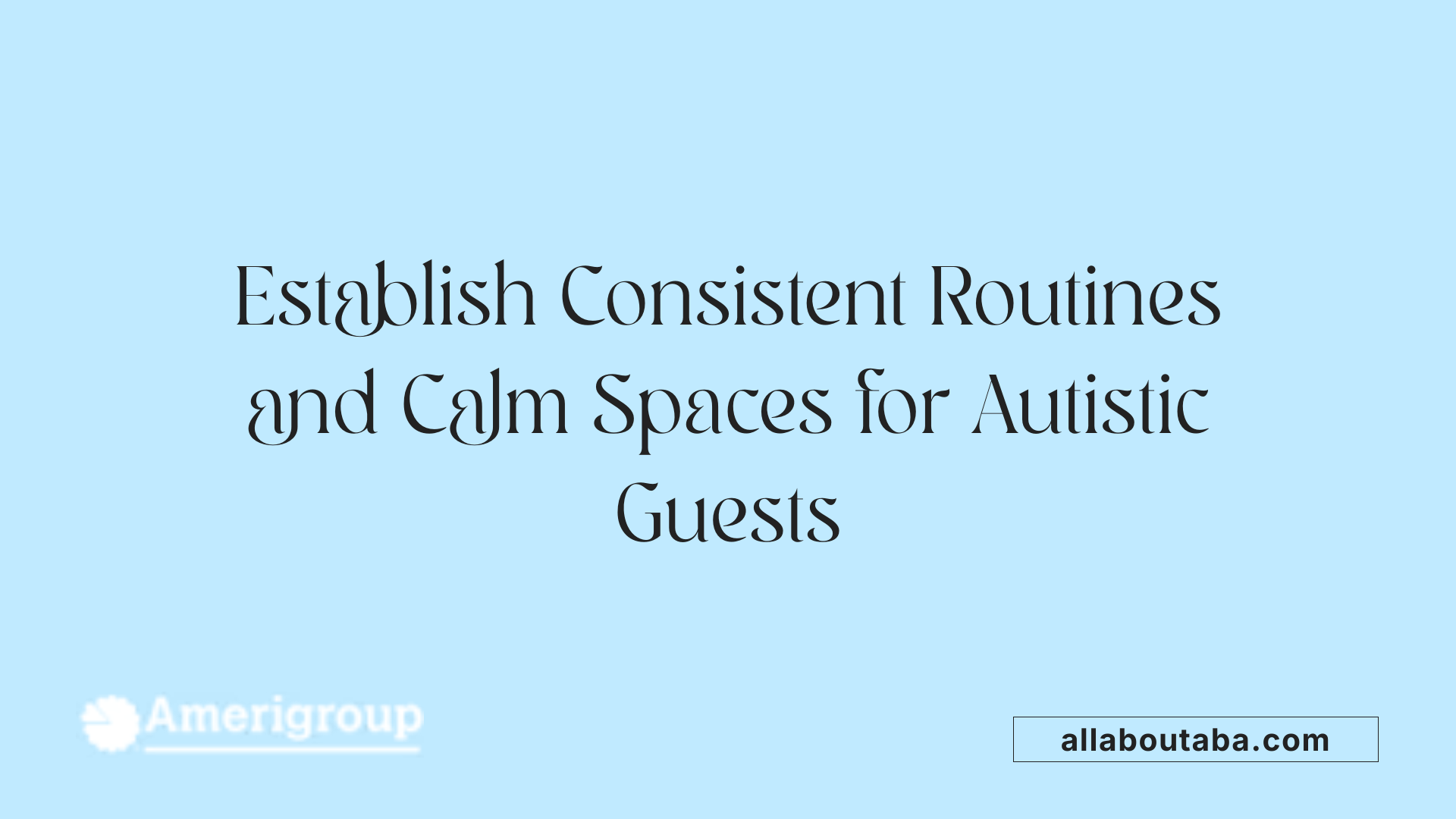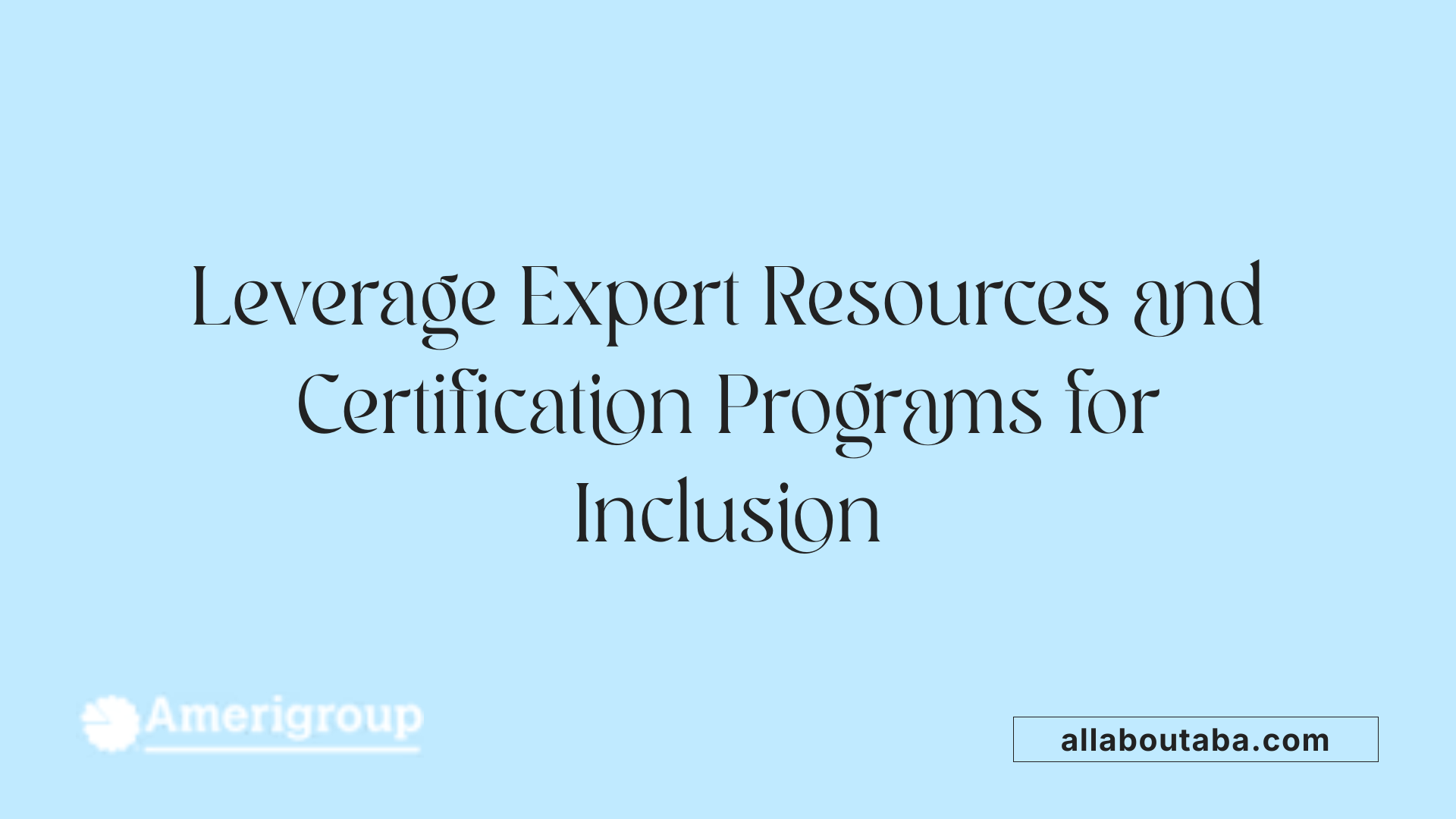Understanding Autism-Friendly Hospitality
As autism awareness grows, the hospitality industry is recognizing the importance of making accommodations that ensure comfort, safety, and enjoyment for autistic travelers. Developing best practices for autism-friendly hotels and lodging involves implementing sensory-sensitive design, staff training, and inclusive service offerings. This article explores comprehensive strategies, environmental modifications, staff preparedness, and resources to promote truly inclusive travel experiences for individuals on the autism spectrum.
Designating Autism-Friendly Spaces and Sensory Modifications

What design and environmental modifications can support sensory sensitivities in hotels?
Hotels aiming to be accommodating for guests with autism can implement a range of sensory-friendly design elements. A primary feature is the creation of quiet zones and sensory rooms that offer peaceful environments away from busy areas. These rooms are equipped with calming activities such as coloring materials, yoga balls, and bean bag chairs, providing a safe space for guests feeling overwhelmed.
Lighting plays a crucial role. Adjustable, dimmable lights and soft lighting options help reduce overstimulation. Minimal decor with neutral colors avoids visual clutter, and fragrance-free bedding prevents sensory overload caused by strong scents.
Soundproofing is another essential. Rooms with soundproof walls, noise reduction measures, and availability of noise-canceling headphones help manage auditory sensitivities. Offering noise-reducing curtains and strategically positioning quiet rooms away from high-traffic zones further minimizes noise disturbances.
To support wayfinding and enhance comfort, hotels utilize visual aids such as maps, arrows, signs, and photographs throughout their premises. Clear, visual schedules provided in advance assist guests with preparation, easing anxiety related to unfamiliar environments.
Staff training is vital. Using resources from organizations like Autism Speaks, hotel staff learn best practices in supporting sensory needs, including understanding sensory overload signs and providing flexible assistance. Visible identification such as pins or signs indicating the hotel’s autism-friendly status raises awareness among staff and other guests.
Sensory tools like fidget toys, weighted blankets, and sensory kits are invaluable for managing sensitivities. These can be provided upon request or in designated sensory kits available in sensory-friendly spaces.
Certification programs and inclusion in autism-friendly hotel directories highlight establishments committed to these practices, reassuring families seeking accessible travel options.
Overall, these modifications and thoughtful planning create a welcoming environment that supports sensory sensitivities, making travel and stays more comfortable and enjoyable for guests with autism.
Creating a Calm Environment and Supportive Atmosphere

How can hotels create routines and supportive environments for autistic guests?
Hotels can establish consistent routines to provide predictability that helps reduce anxiety for autistic guests. This includes setting regular times for check-in, meals, and bedtime, enabling guests to anticipate daily activities comfortably.
Incorporating sensory-friendly design features is also essential. Quiet zones and sensory rooms equipped with calming items like bean bag chairs, yoga balls, and coloring materials offer safe spaces for guests to unwind if they feel overwhelmed.
Visual supports play a vital role in creating a structured environment. Providing detailed maps, schedules, and signs—such as arrows and pictorial instructions—helps guests understand the layout of the hotel and navigate easily. Clear signage indicating quiet zones, sensory rooms, and other supportive facilities enables guests to self-regulate.
Staff training is critical. Using resources from organizations like Autism Speaks, hotel staff can learn best practices for supporting guests with autism. This includes understanding sensory overload, offering flexible assistance, and communicating effectively. Staff badges or signs, like autism-friendly pins, signal trained personnel available to help.
Pre-arrival preparation can further enhance the guest experience. Offering visual guides, calming social stories, or questionnaires about sensitivities helps guests and families prepare for their stay. Providing the option to reserve familiar, sensory-friendly rooms adds predictability.
Amenities such as sensory kits, calming activity boxes, and environmental modifications—like dimmer lights, blackout curtains, and soundproofing—can be tailored to individual needs. These features create a soothing environment that accommodates diverse sensory sensitivities.
Furthermore, offering sensory-friendly dining options, designated quiet dining areas, and flexible scheduling contributes to a supportive atmosphere. This holistic approach fosters comfort and inclusion, making hotels more welcoming for autistic travelers.
In summary, combining consistent routines, sensory modifications, visual supports, and trained staff results in a welcoming, predictable, and calming environment for autistic guests, facilitating enjoyable and stress-free stays.
Staff Training and Awareness for Inclusive Support
What training should hotel staff receive to support autistic guests effectively?
Providing an inclusive environment for guests with autism begins with proper staff training. Hotels should ensure their team members are well-versed in autism awareness, helping staff understand sensory sensitivities, communication styles, and typical challenges faced by autistic individuals.
Training programs should include modules on identifying signs of sensory overload, using appropriate communication strategies, and offering support without making assumptions. It's essential that staff learn how to provide sensory-friendly guidance, assist with navigating spaces, and adapt services such as dining and activities to meet individual needs.
Specialized certifications, like Autism Double-Checked, certify that staff have practical skills for engaging with autistic guests effectively. These programs often include role-playing scenarios, practical tips, and ongoing education to keep staff updated.
In addition to general autism awareness, tailored training should cover the specifics of hotel accommodations, such as explaining sensory-friendly areas, managing noise levels, and adjusting lighting or other environmental factors.
To aid guests, hotels can offer visual guides created in partnership with autism organizations. These guides can help guests familiarize themselves with the layout of the hotel, sensory zones, and available resources before and during their stay.
Ongoing education and training reinforce staff competence and foster a culture of inclusion. Partnering with autism support organizations ensures continuous improvement and credibility, demonstrating a sincere commitment to supporting neurodiverse travelers.
Ensuring staff are comfortable and knowledgeable in supporting autistic guests greatly enhances their experience, making travel more accessible, safe, and enjoyable for everyone involved.
| Training Component | Focus Area | Purpose |
|---|---|---|
| Autism awareness modules | General understanding | Educate staff on autism spectrum disorders and sensitivities |
| Communication techniques | Interaction | Equip staff with effective communication skills |
| Sensory sensitivity training | Environment management | Teach staff how to modify spaces and support sensory needs |
| Visual guide usage | Planning | Help guests navigate the hotel through visual aids |
| Certification programs | Skill validation | Validate staff competence through recognized standards |
This structured approach ensures hotels are prepared to serve all guests with dignity and understanding, fostering an environment of accessibility and respect.
Developing Inclusive Policies and Certification Opportunities

What resources and expert advice are available for developing autism-friendly hotel policies?
Creating hotel environments that truly support guests with autism requires careful planning and expert insights. Fortunately, numerous resources and advice from specialists can guide hoteliers in establishing inclusive policies.
One of the most valuable sources is autism organizations like Autism Speaks and KultureCity. These organizations provide comprehensive guidelines, training programs, and standards for sensory-friendly accommodations. Their resources include detailed checklists for modifying spaces, training templates for staff, and certification programs that recognize hotels meeting specific autism support criteria.
Consulting with autism specialists, sensory integration therapists, and behavioral experts is also highly recommended. These professionals can offer tailored recommendations to adapt the physical environment—such as creating sensory zones, lowering ambient noise, and installing adjustable lighting—and ensure communication strategies align with guests' needs.
Implementing best practices widely used in autism-friendly hotels involves establishing quiet zones or sensory rooms, providing visual supports like maps and detailed schedules, and training staff on understanding sensory overload and communication techniques. These measures help reduce stress and create a welcoming atmosphere.
Partnerships with certification organizations are another way to enhance credibility and ensure standards are met. For example, programs like Autism Double Checked offer a verification process that assesses a hotel's sensory modifications, staff training, and overall environment.
Additionally, integrating sensory-friendly amenities—such as blackout curtains, soundproof rooms, sensory kits, and visual signage—further supports guests with autism. Hotels that pursue certification not only improve their offerings but also signal their commitment to inclusive hospitality.
By leveraging guidance from established organizations and expert advice, hotel operators can develop comprehensive policies that enhance accessibility and ensure positive experiences for all guests. Continuous staff training, feedback from autistic individuals and their families, and staying updated on evolving best practices are essential components of a successful inclusivity strategy.
In summary, resources like Autism Speaks and KultureCity, combined with professional consultations and certification programs such as Autism Double Checked, provide a solid foundation for creating effective, respectful, and welcoming autism-friendly hotel environments.
| Resource / Program | Description | Benefits |
|---|---|---|
| Autism Speaks | Provides guidelines, training resources, and toolkits for autism accommodation | Helps hotels understand needs and implement sensory-friendly changes |
| KultureCity | Offers sensory inclusion certification | Validates sensory accommodations and enhances credibility |
| Autism Double Checked | Certification for autism-friendly environment and staff training | Ensures standards are met and promotes recognition |
| Sensory Integration Experts | Specialists who can advise on physical environment and sensory needs | Tailors hotel modifications to individual needs |
Developing such policies and pursuing certification not only improves guest experience but also positions the hotel as a leader in inclusive hospitality. Staying committed to continuous improvement and engaging with the autism community ensures that these efforts remain effective and respectful.
Evaluating and Selecting Autism-Friendly Accommodation Options
How can hotels evaluate and select autism-friendly accommodation options?
Hotels aiming to attract guests with autism need to incorporate specific features that support sensory and social needs. These features often include designated quiet zones, sensory-friendly rooms, and sensory kits that provide tools like noise-canceling headphones, fidget toys, or weighted blankets.
One reliable way to identify genuinely autism-friendly properties is through sensory-inclusive certifications from recognized organizations such as KultureCity® or the Champion Autism Network. These certifications indicate that the hotel has met standards for sensory accommodations and staff training.
Staff training is crucial. Hotels should look for programs that educate employees on understanding sensory overload, communicating effectively, and providing flexible support tailored to individual needs. Well-trained staff can significantly improve the experience of autistic guests.
Guest reviews remain an invaluable resource. Families who have previously stayed can share insights about the supportiveness of staff, the availability of sensory amenities, and the overall atmosphere. Positive reviews that mention ease of routines or reduced stress are indicators of effective accommodations.
In terms of room selection, properties that offer options like separate sleeping areas or suites help reduce shared sensory input, which can be overwhelming for some individuals. Flexible dining options and detailed visual tours of the property, including photos of sensory areas and room layouts, are beneficial for planning and minimizing surprises.
Location considerations also matter. Hotels close to attractions that are not overly stimulating—such as parks or quiet beaches—can enhance comfort. Proximity to amenities like pools, indoor play zones, or libraries can also facilitate a family-friendly environment.
Other practical elements include flexibility with check-in and check-out times to accommodate travel delays or varying routines. Transparent communication about hotel features, available support, and routines helps families prepare for their stay.
| Feature | Description | Additional Notes |
|---|---|---|
| Sensory accommodations | Quiet zones, sensory kits, sensory rooms | Certified by organizations like KultureCity® |
| Staff training | Autism awareness, sensory overload management, communication | Programs based on Autism Speaks resources |
| Room features | Separate sleep areas, soundproofing, visual supports | Helps reduce overstimulation |
| Location benefits | Access to quiet attractions, proximity to sensory-friendly amenities | Ensures a balanced, supportive environment |
| Flexibility | Check-in/out times, booking policies, room arrangements | Eases travel stress |
Choosing the right accommodation involves balancing sensory support features, location, flexibility, and verified guest feedback. Families can confidently select a hotel that not only meets their physical needs but also creates a welcoming, inclusive atmosphere for autistic travelers.
Advancing Toward Inclusive Travel Experiences
Creating an autism-friendly hotel environment requires a holistic approach that encompasses physical design, staff training, supportive policies, and community engagement. By designing sensory-friendly spaces, training team members to understand and support sensory needs, and fostering partnerships with autism organizations, hotels can dramatically improve the travel experience for autistic individuals and their families. The commitment to inclusivity not only broadens market reach but also aligns with a growing societal emphasis on accessibility and diversity. As more hospitality providers adopt these best practices, the journey toward truly inclusive and welcoming accommodations becomes a shared goal, creating travel opportunities that are safe, enjoyable, and respectful for all guests.
References
- Becoming an autism-friendly - hotel
- Your Guide to Autism-Friendly Hotels
- How to make travel more accessible for autistic guests
- Four Travel Tips to Create an Autism-Inclusive Family ...
- Tips for a Smooth and Enjoyable Vacation with Your Autistic ...
- Your Guide to Autism-Friendly Hotels
- Becoming an autism-friendly - hotel
- Making Travel Better for Autistic People
- Accommodations and Hotels for Children With Sensory ...







